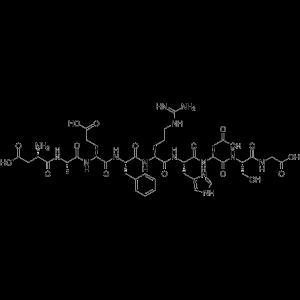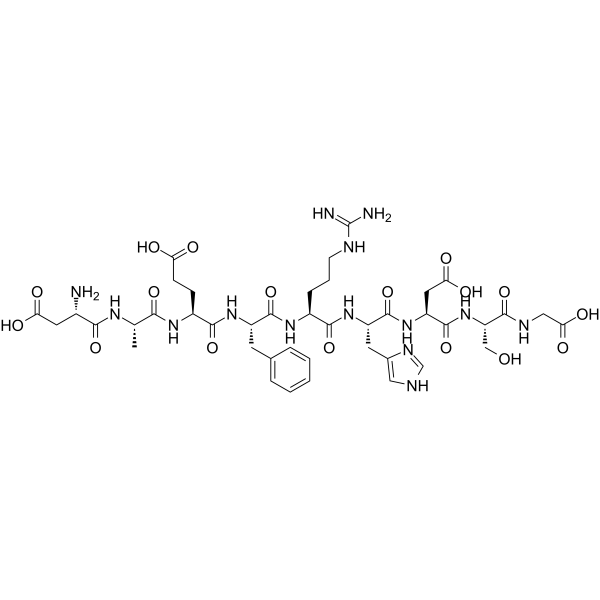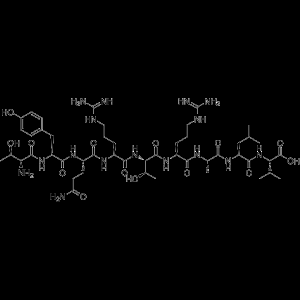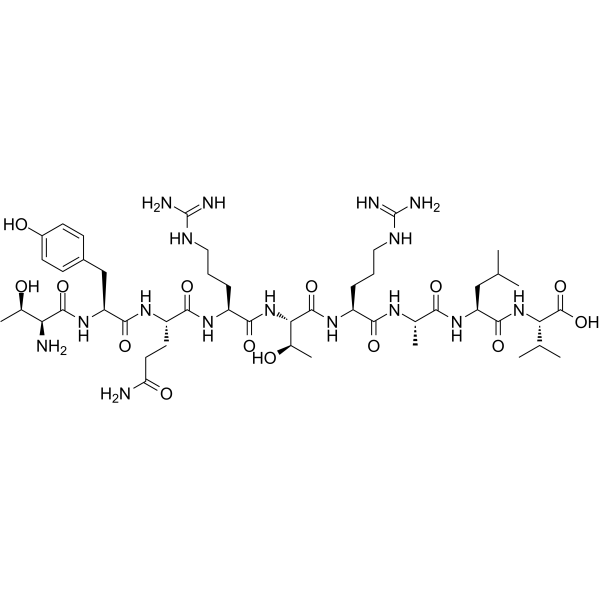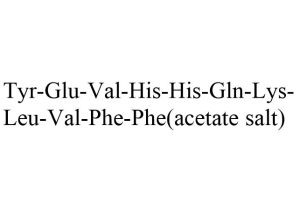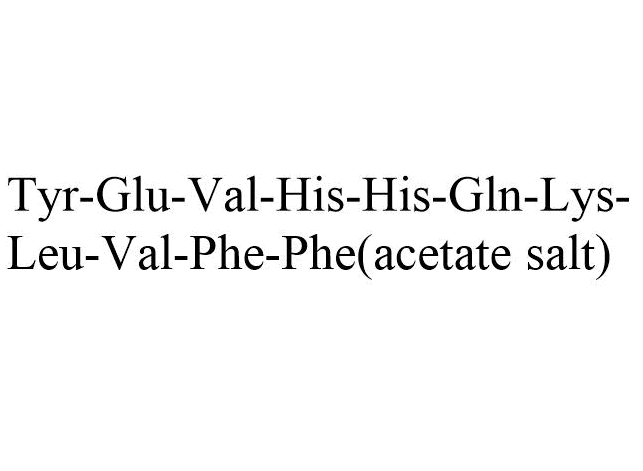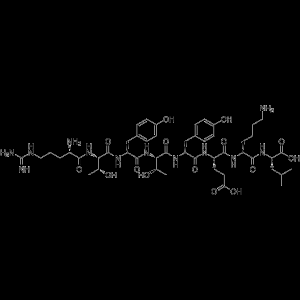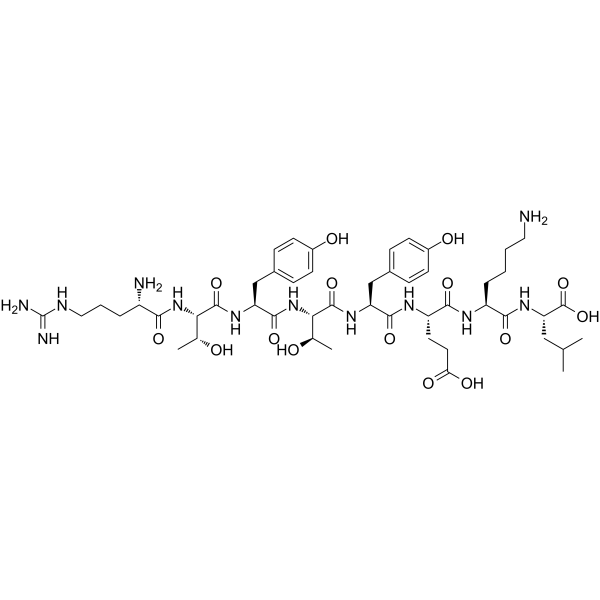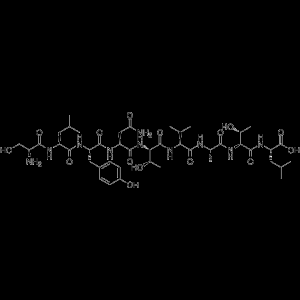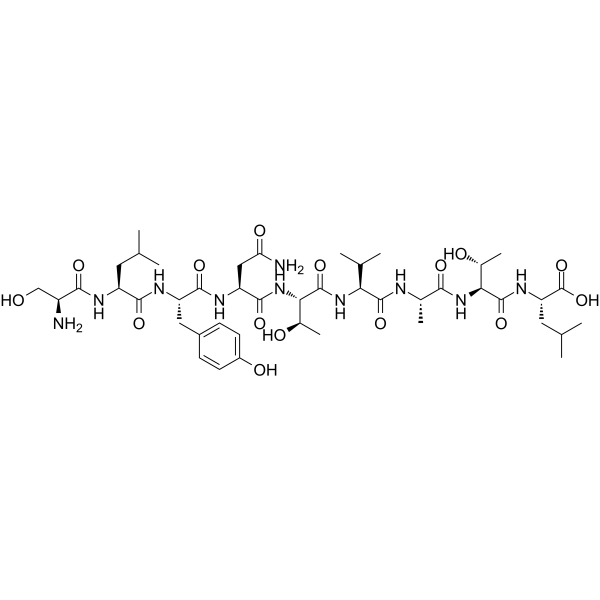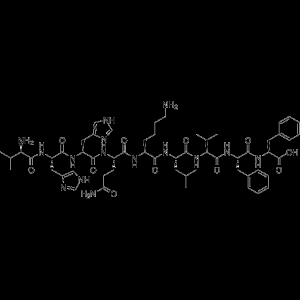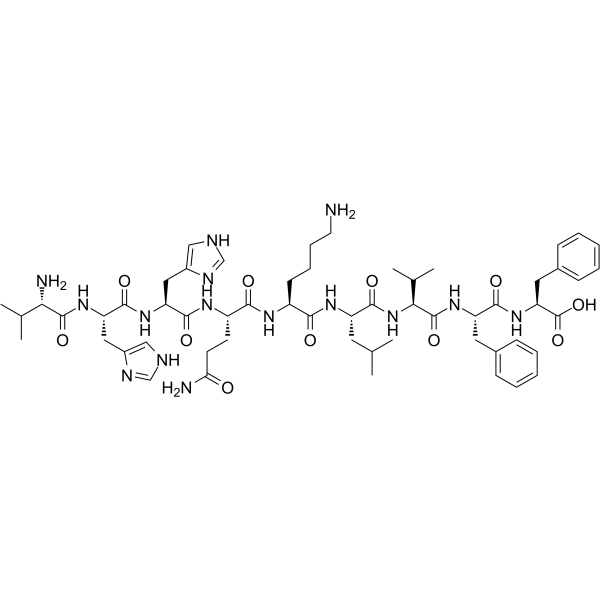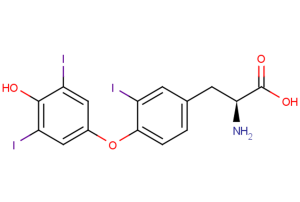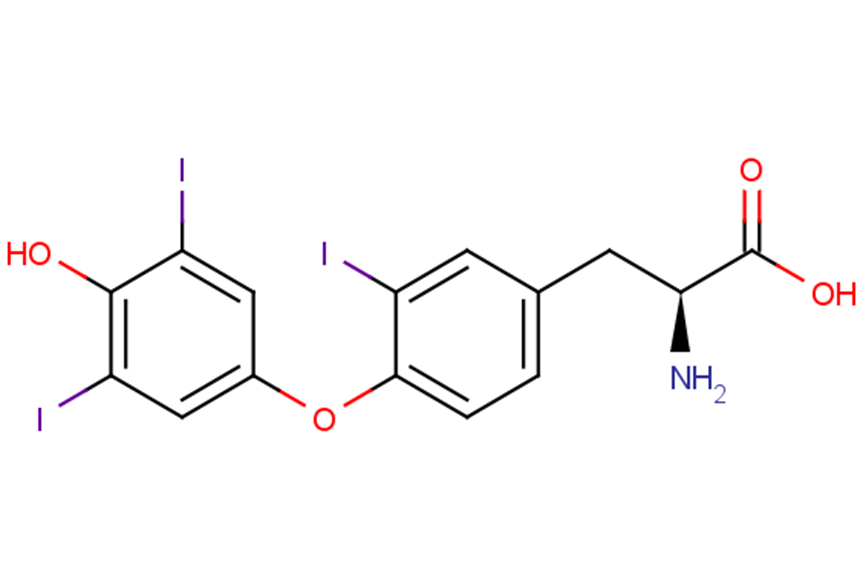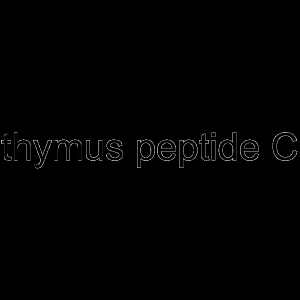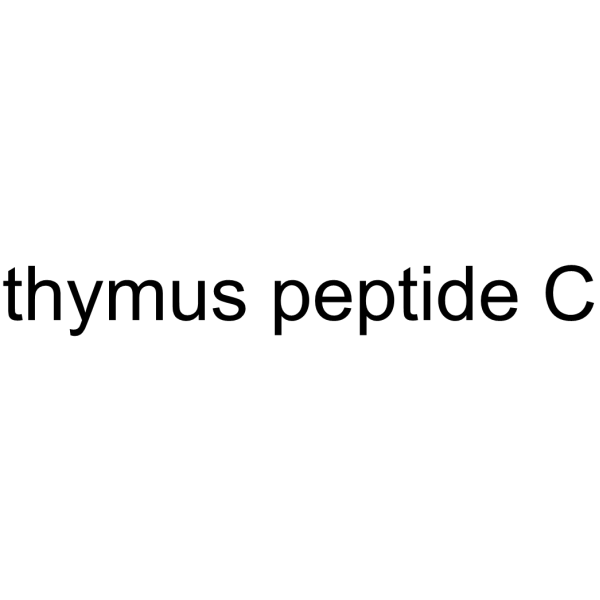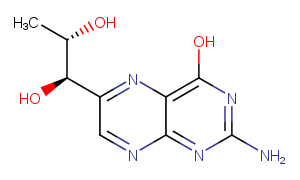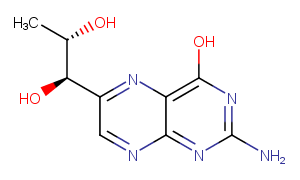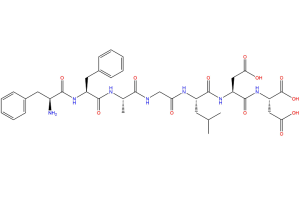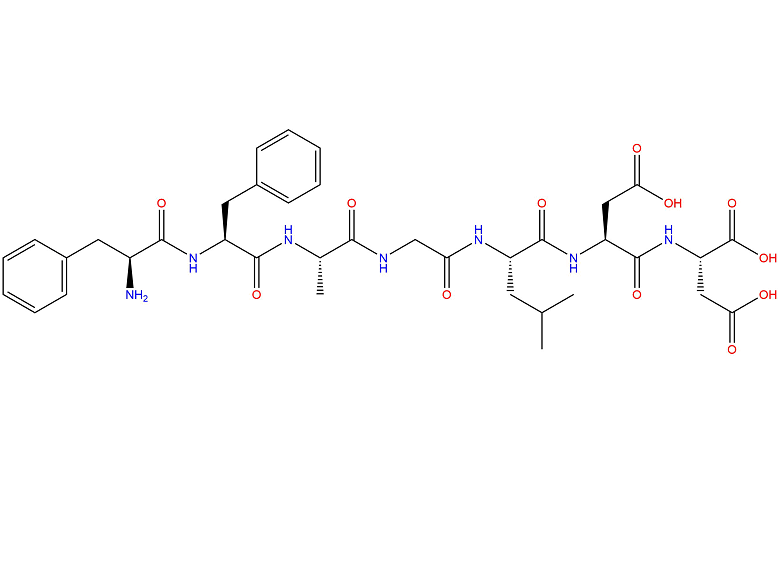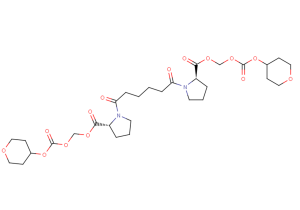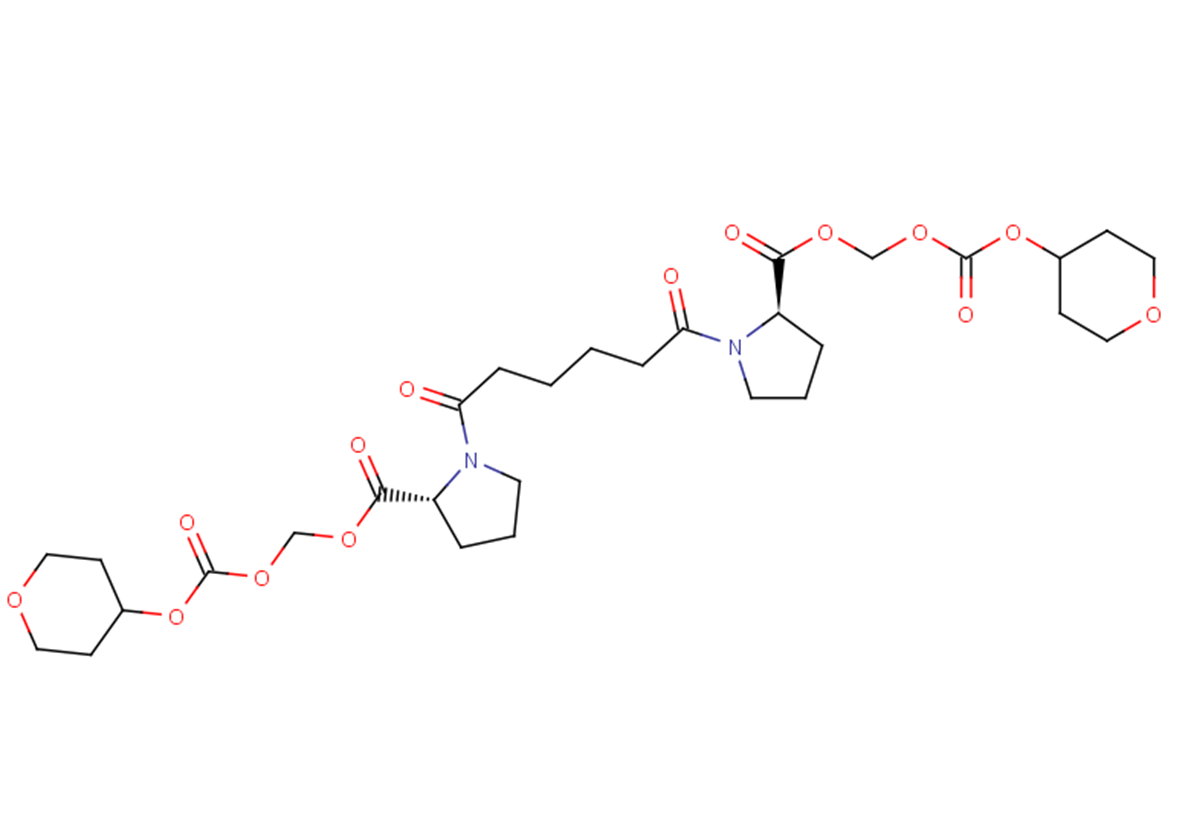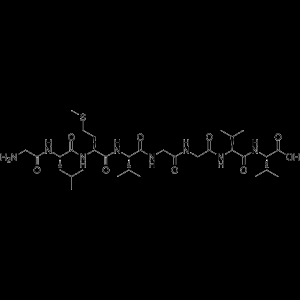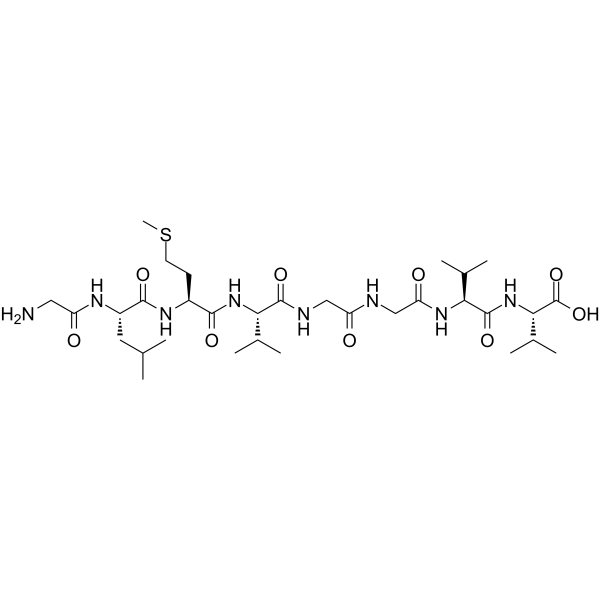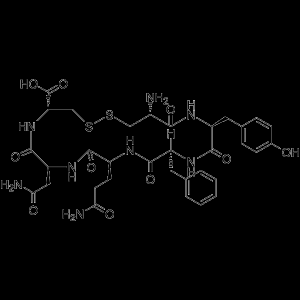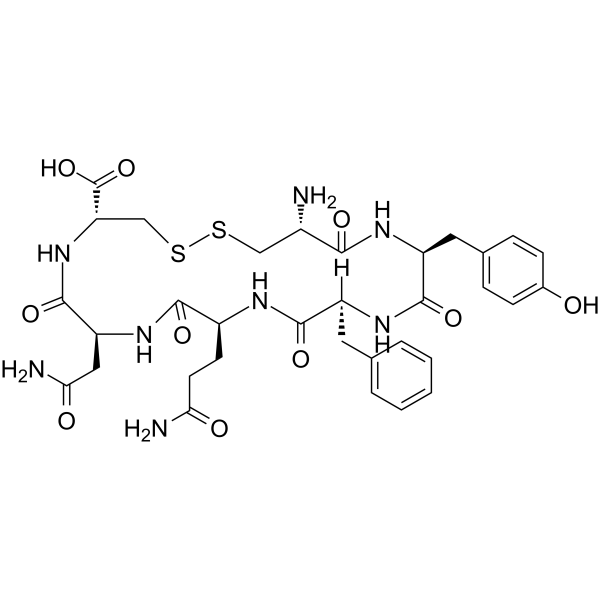TargetMol
This is an N-terminal fragment of beta amyloid. It consists of amino acid residues 1 to 9. Truncated beta amyloid peptide (10-40) still forms amyloid fibrils and shows fibril polymorphism.
More Information
Supplier Page
TargetMol
This is an N-terminal fragment of beta amyloid. It consists of amino acid residues 1 to 9. Truncated beta amyloid peptide (10-40) still forms amyloid fibrils and shows fibril polymorphism.
More Information
Supplier Page
TargetMol
Amyloid β-Protein (10-20) is a fragment of Amyloid-β peptide, maybe used in the research of neurological disease.Amyloid β protein fragment containing the α-secretase processing site (Lys16-Leu17 bond). It also contains the HHQK domain (residues 13-16) responsible for binding to microglial cells.
More Information
Supplier Page
TargetMol
Amyloid β-Protein (10-20) is a fragment of Amyloid-β peptide, maybe used in the research of neurological disease.Amyloid β protein fragment containing the α-secretase processing site (Lys16-Leu17 bond). It also contains the HHQK domain (residues 13-16) responsible for binding to microglial cells.
More Information
Supplier Page
TargetMol
Amyloid β-Protein (10-20) is a fragment of Amyloid-β peptide, maybe used in the research of neurological disease.Amyloid β protein fragment containing the α-secretase processing site (Lys16-Leu17 bond). It also contains the HHQK domain (residues 13-16) responsible for binding to microglial cells.
More Information
Supplier Page
TargetMol
β-Amyloid (10-35), amide, is a chemical compound consisting of 26 amino acids, specifically residues 10-35 of the Aβ peptide. It serves as the primary constituent of amyloid plaques found in Alzheimer’s disease.
More Information
Supplier Page
TargetMol
β-Amyloid (10-35), amide, is a chemical compound consisting of 26 amino acids, specifically residues 10-35 of the Aβ peptide. It serves as the primary constituent of amyloid plaques found in Alzheimer’s disease.
More Information
Supplier Page
TargetMol
β-Amyloid (10-35), amide, is a chemical compound consisting of 26 amino acids, specifically residues 10-35 of the Aβ peptide. It serves as the primary constituent of amyloid plaques found in Alzheimer’s disease.
More Information
Supplier Page
TargetMol
β-Amyloid (11-22) is a peptide fragment of β-Amyloid.Beta-amyloid peptide (Abeta), the major constituent of amyloid plaques in the brains of Alzheimer’s patients, is thought to be the cause of Alzheimer’s Disease (AD). AD is the most common neurodegenerative disease and afflicts about 10% of the population over 60.
More Information
Supplier Page
TargetMol
β-Amyloid (11-22) is a peptide fragment of β-Amyloid.Beta-amyloid peptide (Abeta), the major constituent of amyloid plaques in the brains of Alzheimer’s patients, is thought to be the cause of Alzheimer’s Disease (AD). AD is the most common neurodegenerative disease and afflicts about 10% of the population over 60.
More Information
Supplier Page
TargetMol
β-Amyloid (12-20) is a peptide fragment of β-Amyloid.Thsis peptide contain the amino acid residues VFF at position (18-20), suggesting that this triad has amnestic effects.
More Information
Supplier Page
TargetMol
β-Amyloid (12-20) is a peptide fragment of β-Amyloid.Thsis peptide contain the amino acid residues VFF at position (18-20), suggesting that this triad has amnestic effects.
More Information
Supplier Page
TargetMol
Amyloid β-peptide fragment; minimum section required to bind to brain proteins. Binds with high affinity to α7-nicotinic ACh receptors, and impairs memory retention following central administration in mice in vivo.
More Information
Supplier Page
TargetMol
Amyloid β-peptide fragment; minimum section required to bind to brain proteins. Binds with high affinity to α7-nicotinic ACh receptors, and impairs memory retention following central administration in mice in vivo.
More Information
Supplier Page
TargetMol
Amyloid β-peptide fragment; minimum section required to bind to brain proteins. Binds with high affinity to α7-nicotinic ACh receptors, and impairs memory retention following central administration in mice in vivo.
More Information
Supplier Page
TargetMol
β-Amyloid (12-28) (TFA) (Amyloid β-Protein (12-28) (TFA)) is a peptide fragment of β-amyloid protein (β1-42). β1-42, a 42 amino acid protein , is the major component of senile plaque cores. β-Amyloid (12-28) (TFA) shows aggregation properties. β-Amyloid (12-28) (TFA) has the potential for Alzheimer’s disease research [1] .
More Information
Supplier Page
TargetMol
β-Amyloid (12-28) (TFA) (Amyloid β-Protein (12-28) (TFA)) is a peptide fragment of β-amyloid protein (β1-42). β1-42, a 42 amino acid protein , is the major component of senile plaque cores. β-Amyloid (12-28) (TFA) shows aggregation properties. β-Amyloid (12-28) (TFA) has the potential for Alzheimer’s disease research [1] .
More Information
Supplier Page
TargetMol
β-amyloid (12-28) TFA, a peptide fragment of β-amyloid protein (β1-42), is the major component of senile plaque cores. β-amyloid (12-28) has aggregation properties and the potential for Alzheimer’s disease research.
More Information
Supplier Page
TargetMol
β-amyloid (12-28) TFA, a peptide fragment of β-amyloid protein (β1-42), is the major component of senile plaque cores. β-amyloid (12-28) has aggregation properties and the potential for Alzheimer’s disease research.
More Information
Supplier Page
TargetMol
β-Amyloid (13-27) is a peptide consisting of amino acid of 13 to 27 of beta amyloid protein. This synthetic peptide consists of amino acids 26 to 40 of beta amyloid protein. It can be used to study the kinetics of beta amyloid formation.
More Information
Supplier Page
TargetMol
β-Amyloid (13-27) is a peptide consisting of amino acid of 13 to 27 of beta amyloid protein. This synthetic peptide consists of amino acids 26 to 40 of beta amyloid protein. It can be used to study the kinetics of beta amyloid formation.
More Information
Supplier Page
TargetMol
TargetMol
TargetMol
Intracerebroventricular administration of synthetic peptides Beta-amyloid (12-20), (12-28), and (18-28) causes amnesia in mice. These peptides have only amino acid residues VFF at position 18 to 20 in common, suggesting the amnestic effect of the triad.
More Information
Supplier Page
TargetMol
Intracerebroventricular administration of synthetic peptides Beta-amyloid (12-20), (12-28), and (18-28) causes amnesia in mice. These peptides have only amino acid residues VFF at position 18 to 20 in common, suggesting the amnestic effect of the triad.
More Information
Supplier Page
TargetMol
β-Amyloid (22-35) is a 14-aa peptide, shows aggregates and induces neurotoxicity in the hippocampal cells. Beta amyloid (22-35) is a synthetic truncated fragment of beta-amyloid peptide.
More Information
Supplier Page
TargetMol
β-Amyloid (22-35) is a 14-aa peptide, shows aggregates and induces neurotoxicity in the hippocampal cells. Beta amyloid (22-35) is a synthetic truncated fragment of beta-amyloid peptide.
More Information
Supplier Page
TargetMol
β-Amyloid (22-35) is a 14-aa peptide, shows aggregates and induces neurotoxicity in the hippocampal cells. Beta amyloid (22-35) is a synthetic truncated fragment of beta-amyloid peptide.
More Information
Supplier Page
TargetMol
β-Amyloid 22-35 (Amyloid β-Protein 22-35) TFA, the residues 22-35 fragment ofβ-amyloid protein, has a cytotoxic effect on cultured neurons from the rat hippocampus in serum-free medium. β-Amyloid 22-35 TFA forms aggregates and typical amyloid fibrils resembling those of the β-amyloid protein in neutral buffer solution) [1] .
More Information
Supplier Page
TargetMol
β-Amyloid 22-35 (Amyloid β-Protein 22-35) TFA, the residues 22-35 fragment ofβ-amyloid protein, has a cytotoxic effect on cultured neurons from the rat hippocampus in serum-free medium. β-Amyloid 22-35 TFA forms aggregates and typical amyloid fibrils resembling those of the β-amyloid protein in neutral buffer solution) [1] .
More Information
Supplier Page
TargetMol
This synthetic peptide consists of amino acids 22 to 40 of beta amyloid protein. This peptide sequence is often used in beta amyloid structure and aggregation studies.
More Information
Supplier Page
TargetMol
This synthetic peptide consists of amino acids 22 to 40 of beta amyloid protein. This peptide sequence is often used in beta amyloid structure and aggregation studies.
More Information
Supplier Page
TargetMol
β-Amyloid (25-35) (Aβ25-35) is the fragment Aβ(25-35) of the Alzheimer’s amyloid β-peptide. Which has shown neurotoxic activities in cultured cells.
More Information
Supplier Page
TargetMol
β-Amyloid (25-35) (Aβ25-35) is the fragment Aβ(25-35) of the Alzheimer’s amyloid β-peptide. Which has shown neurotoxic activities in cultured cells.
More Information
Supplier Page
TargetMol
β-Amyloid (25-35) (Aβ25-35) is the fragment Aβ(25-35) of the Alzheimer’s amyloid β-peptide. Which has shown neurotoxic activities in cultured cells.
More Information
Supplier Page
TargetMol
β-Amyloid (25-35) (Aβ25-35) is the fragment Aβ(25-35) of the Alzheimer’s amyloid β-peptide. Which has shown neurotoxic activities in cultured cells.
More Information
Supplier Page
TargetMol
β-Amyloid (25-35) (Aβ25-35) is the fragment Aβ(25-35) of the Alzheimer’s amyloid β-peptide. Which has shown neurotoxic activities in cultured cells.
More Information
Supplier Page
TargetMol
β-Amyloid (25-35) (Aβ25-35) is the fragment Aβ(25-35) of the Alzheimer’s amyloid β-peptide. Which has shown neurotoxic activities in cultured cells.
More Information
Supplier Page
TargetMol
β-Amyloid (29-40) is a fragment of Amyloid-β peptide.Alzheimer’s beta amyloid peptide (29-40/42) C-terminal fragments have physical and chemical properties related to those of fusion peptides of viral proteins. The fusion of liposomes can be induced by these peptides in vitro.
More Information
Supplier Page
TargetMol
β-Amyloid (29-40) is a fragment of Amyloid-β peptide.Alzheimer’s beta amyloid peptide (29-40/42) C-terminal fragments have physical and chemical properties related to those of fusion peptides of viral proteins. The fusion of liposomes can be induced by these peptides in vitro.
More Information
Supplier Page
TargetMol
β-Amyloid (29-40) is a fragment of Amyloid-β peptide.Alzheimer’s beta amyloid peptide (29-40/42) C-terminal fragments have physical and chemical properties related to those of fusion peptides of viral proteins. The fusion of liposomes can be induced by these peptides in vitro.
More Information
Supplier Page
TargetMol
TargetMol
TargetMol
TargetMol
TargetMol
TargetMol
TargetMol
TargetMol
TargetMol



